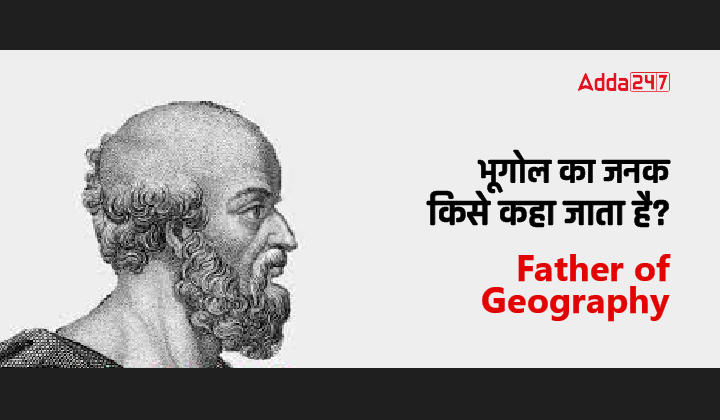Table of Contents
Eratosthenes of Cyrene, a Greek mathematician and astronomer, is credited with coining the term “geography” (Greek: geographika). Also known as the Father of Geography, he is an esteemed individual. In this article, we shall further delve into his contributions towards the subject. Knowledge of the same will be of enormous help to government exam aspirants.
Geography – An Overview
The science of geography is the study of the Earth, its physical characteristics, land masses, seas, and oceans. It also includes the natural events that take place there, the inhabitants of the planet and how they interact with their surroundings.
Physical geography is the intricate study of the planet Earth, its surface, and the different patterns of its lithosphere (the land and its features), hydrosphere (the water surface of Earth and its traits), biosphere (the living things in the land and the water), and atmosphere (the gaseous layer that envelops the earth).
Father of Geography & His Discoveries
The father of Geography came up with a few revelations about the earth and how it functions. Read below to know more about his discoveries.
- He has drawn a very realistic map of the entire planet, composed of grid lines that resemble the latitudes and longitudes. These, we now use to depict various locations on the planet.
- He has computed the Earth’s radius with remarkable precision.
- These measurements were used to calculate the circumference. One was well in Syene that was so deep that sunlight could only enter it on the day of the summer solstice.
- He was also aware of the distance between Alexandria and Syene.
- Eratosthenes also devised the tilt of the Earth’s axis and gave us the formula for calculating leap years, which we continue to use today.
- His most notable contribution to mathematics was a method for determining prime numbers, known as Eratosthenes Sieve.
The Father of Geography & His Contributions
Eratosthenes authored “Geography,” a thorough treatise on the globe while working as the head librarian and scholar at the Library of Alexandria. This was the very first instance of the word, which in Greek means “writing about the world.” Some of his contributions at large include:
- The concepts of arid, temperate, and freezing climate zones were first penned down by Eratosthenes.
- Although inaccurate, his map of the world was the first of its type and included a grid of parallels and meridians that were used to calculate the distances between various sites.
- Despite the fact that Eratosthenes’ original “Geography” did not survive, descriptions by Greek and Roman historians allow modern researchers to know what it was composed of.
Book by the Father of Geography & its Significance
The first volume of the book “Geography” included a recap of previous geographical research as well as Eratosthenes’ theories regarding the appearance of the Earth. He thought it was a fixed globe that simply underwent surface modifications. The mathematical calculations he had employed to calculate the circumference of the Earth were detailed in the second volume of “Geography”. The third contained a global map that showed how the continents were divided into numerous countries. This is one of the earliest illustrations of political geography.
Father of Geography & A List of Other Famous Geographers
Here is a list of the most prominent geographers of all time. Even though debatable, they have been referred to as the ‘father’ of various branches of Geography. Refer to the table below for more information on this.
| Other Father Geographers and their Specialization | |
| Father of American Geography | William Morris Davis |
| Father of Geology | James Hutton |
| Father of Modern Geomorphology | William Morris Davis |
| Father of Phytogeography | Alexander Von Humboldt |
| Father of Modern Cartography | Gerardus Mercator |
| Father of Scientific Climatology | Alexander Von Humboldt |
| Father of Human Geography | Carl Ritter |



 UGC NET Notification 2025 Out, Exam Date...
UGC NET Notification 2025 Out, Exam Date...
 UGC NET Application Form 2025 Starts for...
UGC NET Application Form 2025 Starts for...
 UGC NET Exam Pattern 2025 for Paper 1 an...
UGC NET Exam Pattern 2025 for Paper 1 an...














